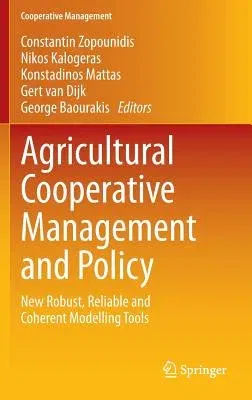Agricultural Cooperative Management and Policy: New Robust, Reliable and Coherent Modelling Tools (2014)Hardcover - 2014, 20 June 2014

Qty
1
Turbo
Ships in 2 - 3 days
In Stock
Free Delivery
Cash on Delivery
15 Days
Free Returns
Secure Checkout

Part of Series
Cooperative Management
Print Length
422 pages
Language
English
Publisher
Springer
Date Published
20 Jun 2014
ISBN-10
331906634X
ISBN-13
9783319066349
Description
Product Details
Book Edition:
2014
Book Format:
Hardcover
Country of Origin:
NL
Date Published:
20 June 2014
Dimensions:
23.39 x
15.6 x
2.39 cm
Genre:
Economic
ISBN-10:
331906634X
ISBN-13:
9783319066349
Language:
English
Location:
Cham
Pages:
422
Publisher:
Series:
Weight:
784.71 gm